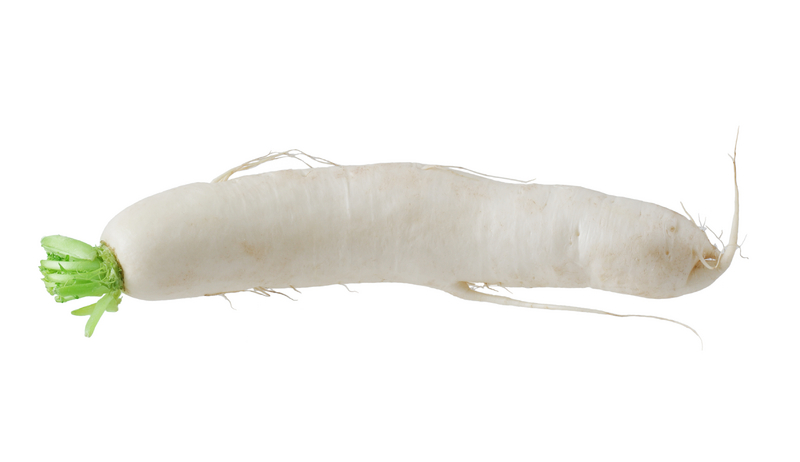
I have a love-hate relationship with radishes. As a child, I loved to watch them grow in our garden. It was always the little green radish leaves that were the first to poke up through the soil. I knew I didn’t have to wait long before I could wrap my little hands around a bundle of leaves and pull out a bunch of red radishes for supper.
The problem was I hated to eat them. No matter how my Mother prepared the crunchy cruciferous crop, sliced in a salad, sprinkled with salt, or marinated in vinegar and oil, they had too much bite and I was never ready for the after burn.
Enter the daikon; the Asian radish. At a foot long and two-to-three inches in diameter, this radish looks nothing like the little red-hot roots from the family garden.
The daikon (from the Japanese words, ‘dai’ meaning large and ‘kon’ meaning root) found its way to China and then Japan, via the Mediterranean over 2,000 years ago. Today in North America, daikon is grown in the warm climates of California and Texas.
Although there are many varieties, the most commonly seen at the grocers looks like a large, white carrot. By the time it has reached the grocery aisle, the daikon usually has had its leaves removed. But if you happen to find some with their tops on, the Vitamin A-rich greens can be chopped and tossed in salads, soups and stews.
When choosing daikon, appearances are important. Firm, white flesh with no cracks or blemishes helps ensure good taste and a longer shelf life.
At a mere 18 calories per 3-ounce serving, daikon is a great, low-calorie food choice. Plus it’s packed with one-third of an adult’s daily recommended amount of Vitamin C. It’s also a good source of potassium, magnesium, folate, sulphur, iron, and iodine. And if that’s not enough, daikon contains the active enzyme myrosinase that helps digestion.
But what I love the most about daikon is it captures the best of both worlds. Since my tastes have changed more than a bit since I was six, I can now stand the heat coming from the kitchen. Which is why daikon is so great. On the whole, it’s milder than our typical red radish, but is also cool and hot.
The thick, top part of the root is sweet, refreshing and cool, which is perfect for eating raw, sliced or grated in salads or added to vegetable platters. The hotter, bottom half works well in stir-fries and stews, marinated in oil and vinegar or soy sauce, and pickling.
While my red radishes are used mostly for garnish (although I’ve never been able to perfect my rose radish carving), the versatility a daikon serves up warrants front and centre attention on the plate.
